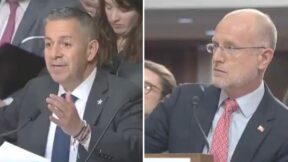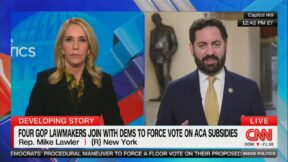Israel 2.0: Land of Milk, Honey and VC-Backed Start-Ups (EXCERPT)
But now their second appointment was about to begin. Carlos Ghosn, the CEO of Renault and Nissan, had a reputation in the business world as a premier turnaround artist. Born in Brazil to Lebanese parents, he is famous in Japan for taking charge of Nissan, which was suffering massive losses, and in two years turning a profit. The grateful Japanese reciprocated by basing a comic-book series on his life.
Peres began to speak so softly that Ghosn could barely hear him, but Agassi was astounded. After the pounding they had just received in the previous meeting, Agassi expected that Peres might say something like, “Shai has this crazy idea about building an electric grid. I’ll let him explain it, and you can tell him what you think.” But rather than pulling back, Peres grew even more energetic than before in making the pitch, and more forceful.
Peres couldn’t help blurting out, “So what do you think of hybrids?” “I think they make no sense,” Ghosn said confidently. “A hybrid is like a mermaid: if you want a fish, you get a woman; if you want a woman, you get a fish.”
Oil is finished, he said; it may still be coming out of the ground, but the world doesn’t want it anymore. More importantly, Peres told Ghosn, it is financing international terrorism and instability. “We don’t need to defend against incoming Katyusha rockets,” he pointed out, “if we can figure out how to cut off the funding that launches them in the first place.”
Then Peres tried to preempt the argument that the technology alternative just didn’t exist yet. He knew that all the big car companies were flirting with a bizarre crop of electric mutations—hybrids, plug-in hybrids, tiny electric vehicles—but none of them heralded a new era in motor vehicle technology.
Just then, again about five minutes into Peres’s pitch, the visitor stopped him. “Look, Mr. Peres,” Ghosn said, “I read Shai’s paper”—Agassi and Peres tried not to wince, but they felt they knew where this meeting was heading—“and he is absolutely right. We are exactly on the same page. We think the future is electric. We have the car, and we think we have the battery.”
Peres was almost caught speechless. Just minutes ago they’d received an impassioned lecture on why the fully electric car would never work and why hybrids were the way to go. But Peres and Agassi knew that hybrids were a road to nowhere. What’s the point of a car with two separate power plants? Existing hybrids cost a fortune and increase fuel efficiency by only 20 percent. They wouldn’t get countries off oil. In Peres and Agassi’s view, hybrids were like treating a gunshot wound with a Band-aid.
But they had never heard all this from an actual carmaker. Peres couldn’t help blurting out, “So what do you think of hybrids?”
“I think they make no sense,” Ghosn said confidently. “A hybrid is like a mermaid: if you want a fish, you get a woman; if you want a woman, you get a fish.”
The laughter from Peres and Agassi was genuine, mixed with a large dose of relief. Had they found a true partner for their vision? Now it was Ghosn’s turn to be worried. Though he was optimistic, all the classic obstacles to electric vehicles still remained: the batteries were too expensive, they had a range less than half that of a tank of gas, and they took hours to recharge. So long as consumers were being asked to pay a premium in price and convenience, clean cars would remain a niche market.
Peres said that he’d had all the same misgivings, until he had met Agassi. This was Agassi’s cue to explain how all these liabilities could be addressed using existing technology, not some miracle battery that wouldn’t be available for decades.
Ghosn’s attention shifted from Peres to Agassi, who dove right in.
Agassi explained his idea, as simple as it was radical: electric cars seemed expensive only because batteries were expensive. But selling the car with the battery is like trying to sell gas cars with enough gasoline to run them for several years. When you factor in operating costs, electric cars are actually much cheaper—seven cents a mile for electric (including both the battery and the electricity to charge it) compared to ten cents a mile for gas, assuming gas costs $2.50 a gallon. If the price of gas is as high as $4.00 per gallon, this cost gap becomes a chasm. But what if you didn’t have to pay for the battery when you bought the car and—as with any other fuel—spread the cost of the battery over the life of the car? Electric cars could become at least as cheap as gasoline cars, and the cost of the battery with the electricity to charge it would be significantly cheaper than what people were used to paying at the pump. Suddenly, the economics of the electric car would turn upside down. Furthermore, over the long run, this already sizable electric cost advantage would be certain to increase as batteries became cheaper.
Overcoming the price barrier was the biggest breakthrough, but it wasn’t sufficient for electric vehicles to become, as Agassi called it, the “Car 2.0” that would replace the transportation model introduced by Henry Ford almost a century ago. A five-minute fill-up will last a gas car three hundred miles. How, Ghosn wondered, can an electric car compete with that?
This is an opinion piece. The views expressed in this article are those of just the author.





Comments
↓ Scroll down for comments ↓